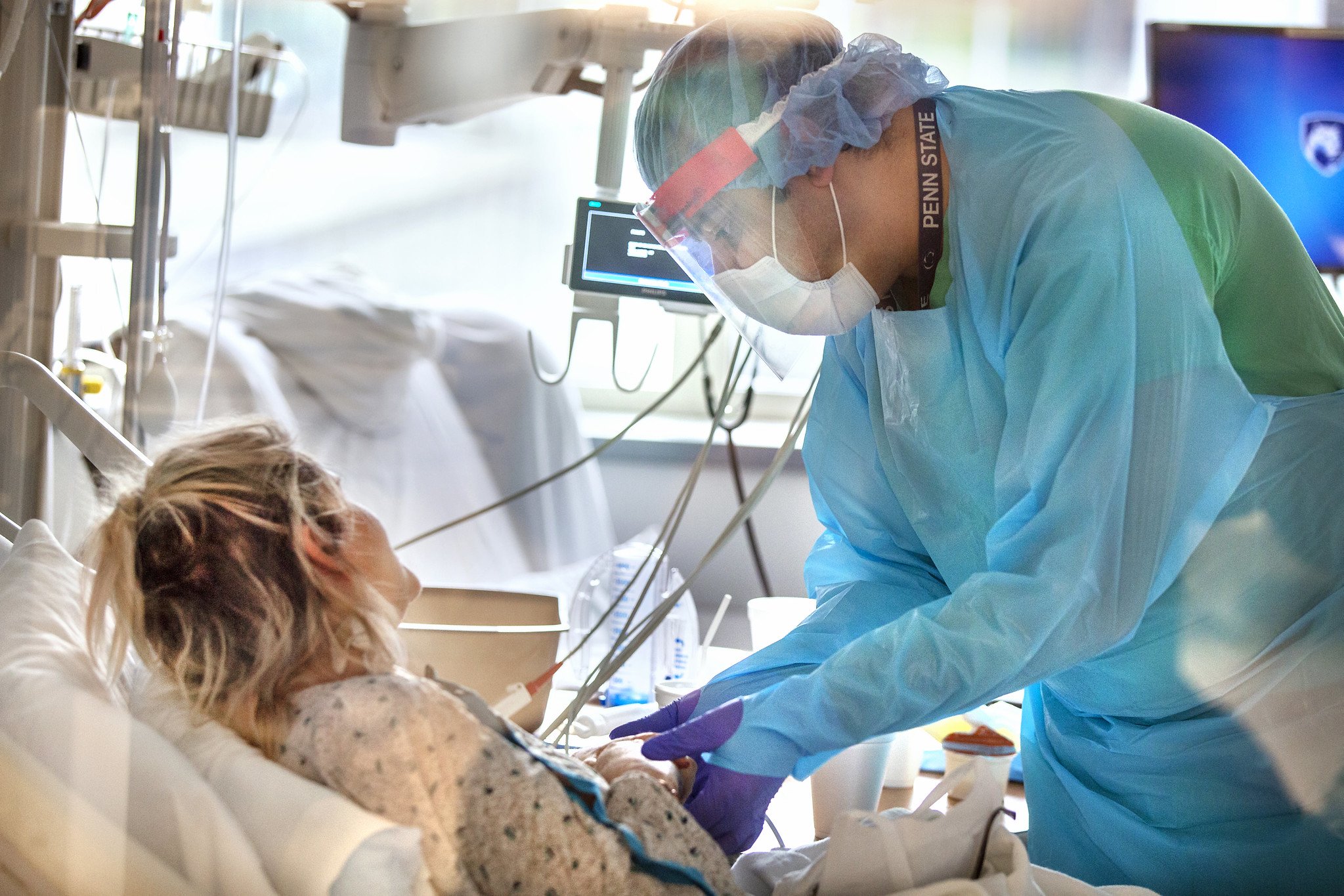Over the last several months, the health system has adapted and implemented a range of policies and procedures pertaining to COVID-19. Under the guidance of the Centers for Disease Control and Prevention and its infectious diseases physicians, Penn State Health has trained staff on the treatment and care of patients with highly infectious diseases – and the staff puts that training to use every day.
One of the key lessons care teams have learned since the onset of COVID-19 involves providing the right care in the right setting.
“We have learned a lot over the last several months regarding which patients need to be in the hospital and who can recover at home,” said Dr. Peter Dillon, Penn State Health’s executive vice president and chief clinical officer. “We have used that knowledge to develop and adapt innovative plans to ensure that we can care for people with COVID-19 while continuing to provide routine and emergent care to all of our patients.”
Since March 16, Penn State Health has successfully treated and discharged more than 550 COVID-confirmed patients in its hospitals and tested more than 50,000 patients for the virus.
“We now have the benefit of experience in caring for these patients while also meeting the needs of our workforce and other patients,” said Dr. Jeffrey Held, vice president for medical affairs at Penn State Health St. Joseph. “Our highest priority remains the health and safety of our patients and caregivers.”
Meantime, the Milton S. Hershey Medical Center has enhanced training and resources for its Special Pathogens Team, which serves as a resource that helps the entire health system to remain prepared on the latest protocols designed to protect patients and staff from deadly germs.
Heightened safety measures to mitigate the spread of COVID-19 remain in effect at all Penn State Health facilities. These include the screening of all patients and employees for COVID-19 symptoms, enhanced cleaning protocols and requiring employees to wear masks and other forms of protective equipment as appropriate.
Penn State Health is asking members of the public to do their part to limit the spread of the virus, especially as the weather turns cooler and people will be spending more time indoors in the coming months.
“It’s easy to fall victim to pandemic fatigue, but if the latest numbers prove anything it’s that COVID-19 is still very much a concern,” said Dr. Cynthia Whitener, chief of the Division of Infectious Diseases at Hershey Medical Center. “But we all need to continue to take commonsense precautions, like wearing a mask, social distancing and practicing proper hand hygiene. It is also extremely important for people to get a flu shot this year.”
EDITORS – The following resources are available for your use:
- Video download of today’s virtual media briefing with Drs. Dillon, Held and Whitener.
- Downloadable, high-resolution photos from the COVID-19 unit at Penn State Health St. Joseph
- Downloadable, high-resolution photos from the COVID-19 unit at Penn State Health Milton S. Hershey Medical Center
- Penn State Health’s COVID-19 dashboard
###
About Penn State Health
Penn State Health is a multi-hospital health system serving patients and communities across 29 counties in central Pennsylvania. It employs more than 14,000 people systemwide. The system includes Penn State Health Milton S. Hershey Medical Center, Penn State Children’s Hospital, and Penn State Cancer Institute based in Hershey, Pa.; Penn State Health St. Joseph Medical Center in Reading, Pa.; and more than 2,000 physicians and direct care providers at more than 100 medical office locations. Additionally, the system jointly operates various health care providers, including Penn State Health Rehabilitation Hospital, Hershey Outpatient Surgery Center, Hershey Endoscopy Center, Horizon Home Healthcare and Pennsylvania Psychiatric Institute. In December 2017, Penn State Health partnered with Highmark Health to facilitate creation of a value-based, community care network in the region. Penn State Health shares an integrated strategic plan and operations with Penn State College of Medicine, the University’s medical school.




